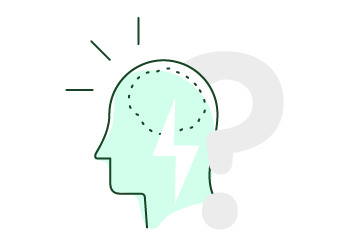How To Build Your Own Gtd App

Personal productivity—and GTD in particular—is largely a matter of habits. No matter how functional, fast and enjoyable is your personal productivity system; if you still use your head as a storage tool, do not make decisions about everything that concerns you and do not review your system regularly, the best software in the market won't be of help.
The first step to become productive is often an inner struggle with oneself to establish the necessary habits. It is not unusual to fall off the wagon several times during this process, getting back to the previous situation of chaos.
That said, and although it's true that GTD can be implemented with both high-tech and paper-based tools, using an appropriate application can transform slow and tedious tasks into quick and simple ones. It is not a panacea, but a pretty good software can alleviate resistance to change and help not to fall off the wagon.
Choosing a good app may be crucial for your GTD implementation, so you will need to spend a bit of time trying out what alternatives are best suited to your needs. During the selection process you should consider the following criteria:
- GTD functionality. Most applications that are called GTD don't include all the elements of the methodology, but probably you can implement what is missed using some workarounds (e.g. there is no Someday/Maybe list, but you can create your own list and include it in your workflow). Find an app with a GTD functionality as complete as possible, and make sure you can cover what is left out in an acceptable manner.
- Web or desktop application? To be fully productive, you need your data always available, so I don't think there is any discussion here: Unless you have to do much of your daily activity with no Internet connection, the web application is the right answer. To this day I can't think of any downside that surpasses the main benefits of web applications:
- You can access your data from any platform, operating system or browser.
- You always have the latest version of the software, with no install or set-up tasks.
- Your data is securely backed up on servers ready for this.
- Mobile app. Your system should have a mobile application that cover at least the basic day-to-day functions: a simple way to capture what is in your mind, a view of your remaining tasks in the context you are in, and a form to edit you basic data and mark off the tasks done at the time. It is not necessary—nor advisable—that the mobile app can do every thing (e.g. it's much more productive to do the Weekly Review in your computer, where you can have a wider view of all your actions and projects).
If we talk about mobile applications, there is also a battle between web apps (used from a browser) and native apps (developed specifically for a system like iPhone, Android, etc.). Here, for the moment, the native ones win, due to their greater ability to work offline and synchronize data in the moment they detect there is Internet connection available. Web apps can also do that using HTML5, but few vendors offer this capacity at the moment, and not every mobile browser can support this functionality. - Integration with other tools. Today, we all use multiple tools on the web where we collect a lot of information, including email, notes in Evernote, favorites in Twitter, links in Delicious, files in Dropbox… Having all that information scattered does not help to have a clear vision of our entire workload. It can cause lack of confidence in our system and increases the odds to fall off the wagon. Therefore, it is recommended that your application allows you to gather the information you've captured with these tools, or you can adapt yourself to use the tools your application works with.
- Price. Don't think about price in absolute terms. Price is always relative, it depends on the value that the product provides and on how you value your time. It's possible that a free application do not help you get organized as you need, and you need to waste some time doing extra chores to compensate for gaps in its functionality. And it's possible that an application for which you pay some bucks per month allows you to get organized, stay relaxed about your commitments and earn some extra hours each month to enjoy with your family, friends or hobbies. Think about that.
- Coolness. Besides all the above, you have to like the application. There should be no friction that keeps you away from using it. It's something you will use every day so you have to love it, not only aesthetically but in the way it is structured for you to use it. If you have to click 6 times for a very common task, or you cannot find the information easily, or pages take 10 seconds to appear, all the above is worth nothing. You will end up loathing it.
Choosing a software that does not fit well with your GTD implementation can make you fail and you will end up blaming the method rather than the tool (something quite common, by the way). Remember that although a good GTD app can greatly enhance your productivity, real productivity comes only from inside you.
Oh! and don't be such a geek. There are many times in which a notepad is the best collection tool.
How To Build Your Own Gtd App
Source: https://facilethings.com/blog/en/application
Posted by: batsonallind.blogspot.com

0 Response to "How To Build Your Own Gtd App"
Post a Comment